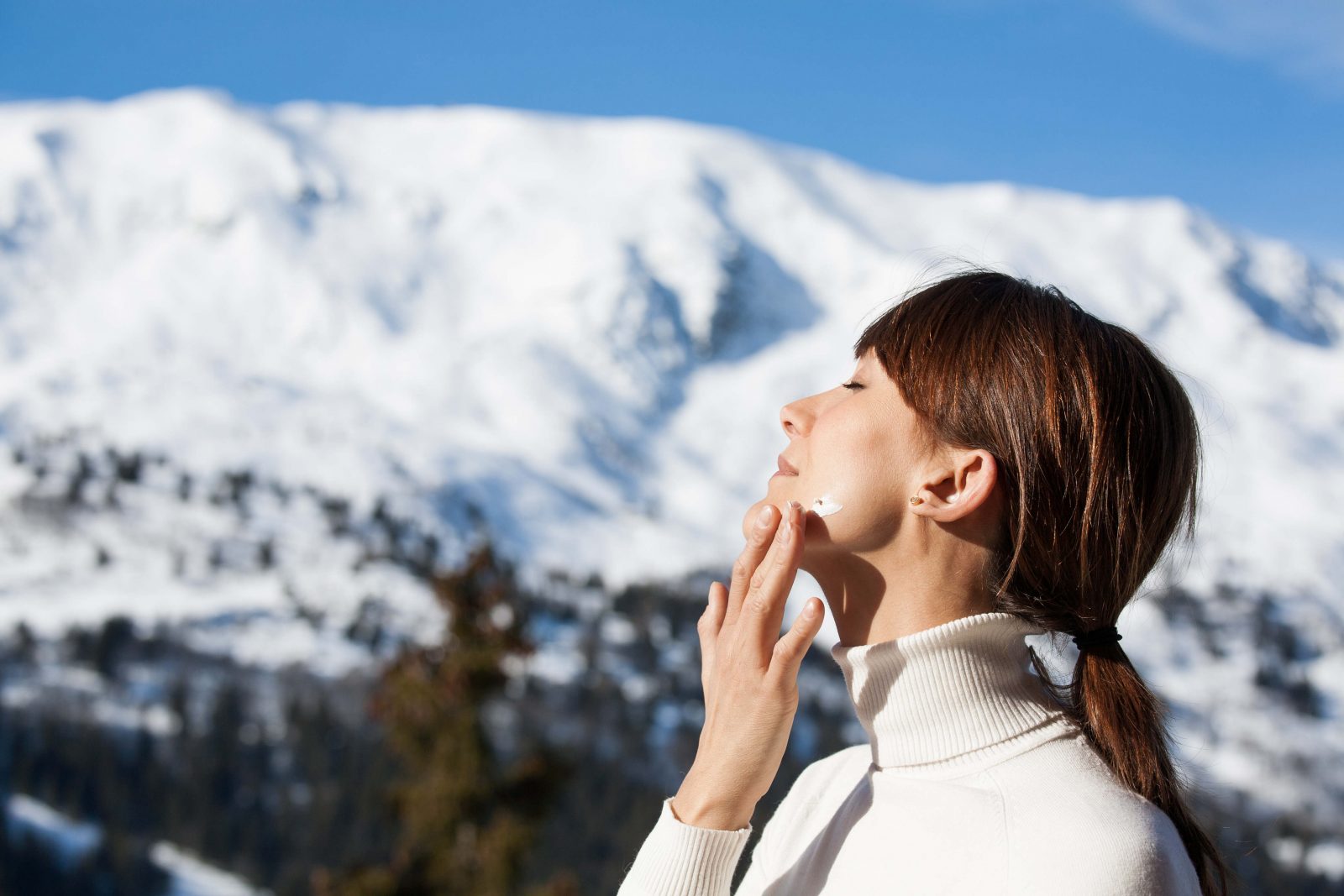Born in London, Dr. Purvisha Patel was raised in Wales (United Kingdom) and Virginia. She completed her undergraduate and medical school studies at the University of Virginia. She completed her dermatology training at The University of Tennessee Health Science Center in Memphis. Dr. Patel is certified by the American Board of Dermatology and is a member of the American Academy of Dermatology and the American Society for Dermatologic Surgery. Dr. Patel’s expertise in skin and skincare is also seen as she formulated and patented the Visha Skincare line when she saw that her products were working on patients of all ages, genders, and skin types. Dr. Patel is also a beauty influencer and her highly published dermatologist publications include Allure, Elle, Vogue, Cosmopolitan, Prevention, Readers Digest, Shape, Women's Health, etc.
 Photo Credit: Shutterstock
Photo Credit: Shutterstock
Yes, you read correctly! Wearing sunscreen in the wintertime is an essential step to your daily skincare routine. Although you might think that the sun is not shining through the heavy snow that's falling, that is in fact not true. Sunscreen is a 365-day a year necessity. To ensure that you are properly taking care of your skin throughout the winter months, Haute Beauty expert Dr. Patel dives into the tips, tricks, and best application methods for sunscreen during the wintertime.
The winter SPF routine
Whether you are shredding the slopes with skis, a snowboard, or even on a tube, SPF protection is a must. UV radiation bounces off surfaces, especially snow and water. Even though it is cold, the sun is still out. The sun emits ultraviolet radiation and those rays come down from the sun regardless of clouds or windows.
UV rays go through any surface visible light can go through. Sunscreen or an SPF > 30 should be worn every day as part of a skincare routine to protect from this ultraviolet radiation from the sun and from HEV radiation from computers and inside devices.
Proper sunscreen application
Usually, in the summer a shot glass of sunscreen is needed per side of your face. In the cooler months with more clothing on for more protection, it is important to apply a quarter-size amount to your face and hands and/or sun-exposed area.
Throughout the day, you should be reapplying sunscreen (when in high exposure) every 2 hours. If you are using an SPF when not in direct sunlight/indoors, reapplying every 4 hours is prudent.
If you don't wear sunscreen regularly, you are exposing your skin to ultraviolet radiation. When doing so, the cells in the skin can get damaged leading to skin cancers and photoaging because the collagen in your skin breaks down giving it wrinkles. When wearing sunscreen you are preventing your skin from anti-aging factors.
Types of sunscreen
Sunscreens come in lots of flavors. There are chemical sunscreens and physical blockers. Those with sensitive skin should opt for physical sunscreens containing titanium or zinc oxide to avoid sensitivity issues.
In terms of multitasking SPF products, like moisturizer or foundation with SPF, they do work as an option for the colder months of the year but they need to be > 30SPF. Many companies add an SPF to their products but the SPF is not high enough. SPF does not add on itself: using a moisturizer of 15 and makeup with SPF 15 does not give you SPF 30 protection. They are made to be stable in colder months, always check the expiration date on these products as SPF products do expire.
Remember SPF is just a measurement to standardize sun protection. It is a measure of redness ... how long a person can stay out before getting red. Redness is the body’s way of protecting us so we go inside. Redness does not determine the degree of DNA damage or free radical damage caused by the radiation... the best protection is a hat and long sleeves.





















